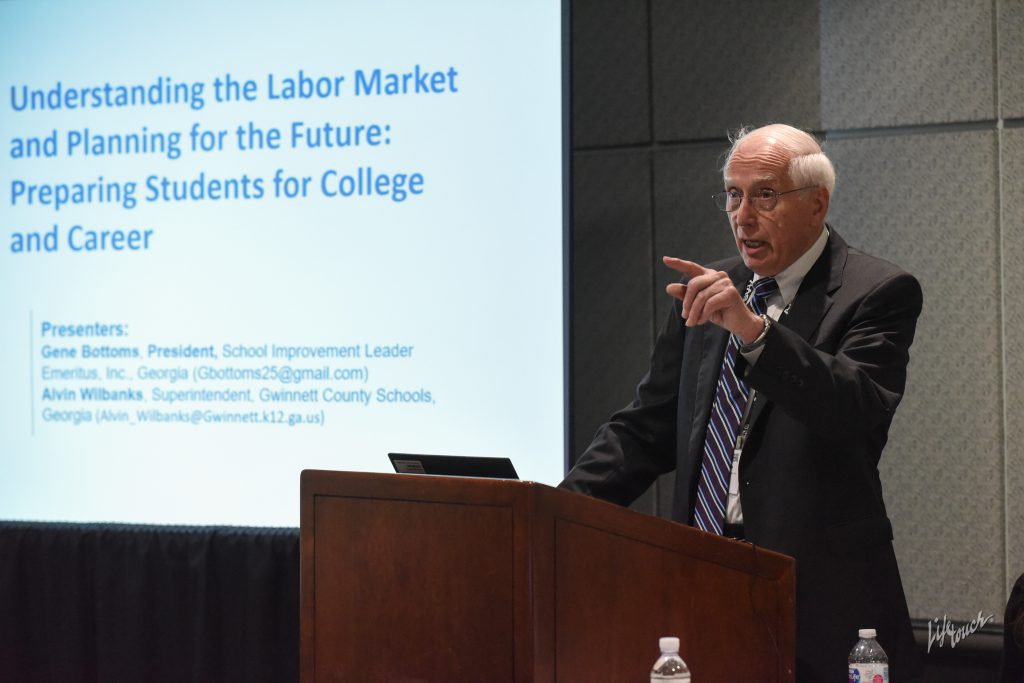Students asleep in classes. Drill worksheets that are mindlessly completed. Classes that don’t challenge students to their full potential. This is the unfortunate reality students face in too many schools.
Two presenters at the AASA national conference on Thursday – Gene Bottoms, president of School Improvement Inc, and Alvin Wilbanks, superintendent of the Gwinnett County Schools in Georgia – are hoping to turn this problem around.
In their session “Understanding the Labor Market and Planning for the Future: Preparing Students for College and Career,” Bottoms and Wilbanks describe how they increase student engagement and teach skills that are applicable to the workforce.
“We underestimate what an awful lot of our students can do in high school,” Bottoms said. “We need to tap into their passions and interests.”
The two presenters pointed to the Advanced Career curricula, produced by the Southern Regional Education Board, a catalyst for success. By challenging students with powerful assignments that revolve around STEM ideas, students will be prepared for college as well as the 21st century workforce.
Powerful assignments focus on four key criteria points: (1) readiness for researching, analyzing, planning and evaluating; (2) technical readiness; (3) student self-reflection about their personal goals; and (4) academic and career readiness.
“If you can engage students emotionally in learning, if you can get them to see a purpose, if you can give them assignments that they think are meaningful but that they have to use their academic skills to complete, you’re going to master academic achievement,” Bottoms said.
Such assignments are designed to go beyond the basic projects found in many classrooms. They challenge students to apply the academic knowledge they learned to real-life projects related to fields they’re interested in studying. Students can also develop essential skills, like critical thinking and collaboration, that employers are looking for.
Another key factor in the Advanced Career curricula is connecting students to the community. Schools pair with businesses, giving students professional guidance through opportunities like job shadowing and internships.
Wilbanks has implemented Advanced Career curricula like clean energy technology and aerospace engineering in his district and has seen the positive impact that the curricula brings.
“I do know that we have made some significant gains in getting students to stay in school and graduate,” Wilbanks said. “We also have made some significant gains in really just the attitudes and discipline. [It’s] a positive force.”
(Cindy Liu is a senior at Diamond Bar High School in Diamond Bar, Calif., and an intern with AASA’s Conference Daily Online.)


